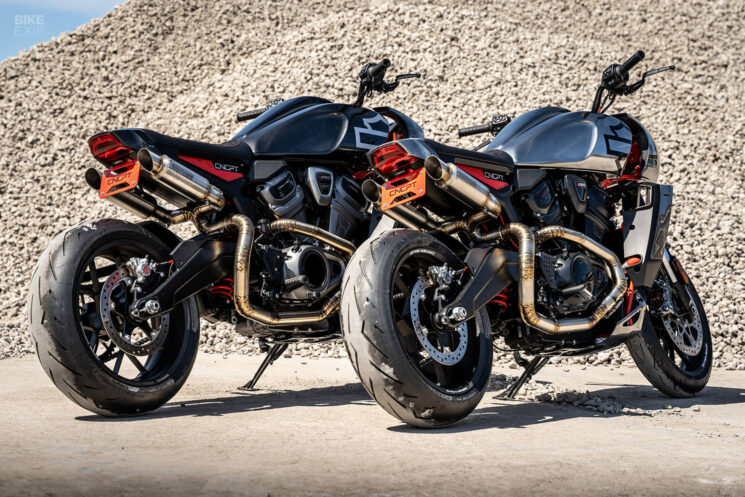When the Harley-Davidson Pan America first broke cover, we knew it would shake up the adventure bike market. What we didn’t expect, was that it would become a regular fixture on the custom motorcycle scene.
The Dutch workshop Powerbrick was one of the first to show the Pan America’s potential, by turning it into an unapologetic streetfighter with razor-sharp styling. That bike sent our servers into overdrive, earning it the top spot on our annual Top 10 list. But, as shop boss Tim Somers explained at the time, it was never meant to be a one-off.
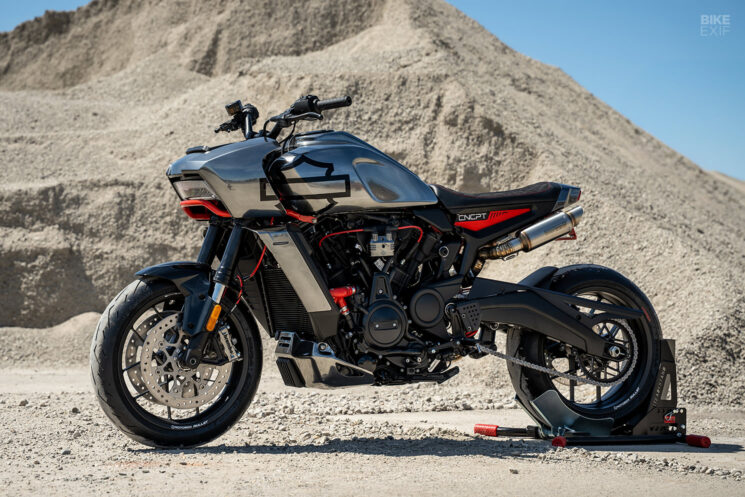
Powerbrick’s first Pan America kicked off the development of a range of plug-and-play parts, under their CNCPT Moto label. After much refinement, those parts are now ready to go—so Tim and his crew have built a pair of jaw-dropping Pan Americas to showcase them.
“We went a little deeper than on our last Pan America build,” he tells us. “These builds are way more sophisticated. We have unofficially dubbed them Vexa and Nova, after chaos and order, as they’re absolute beasts to ride, yet subtle from a design point of view.”
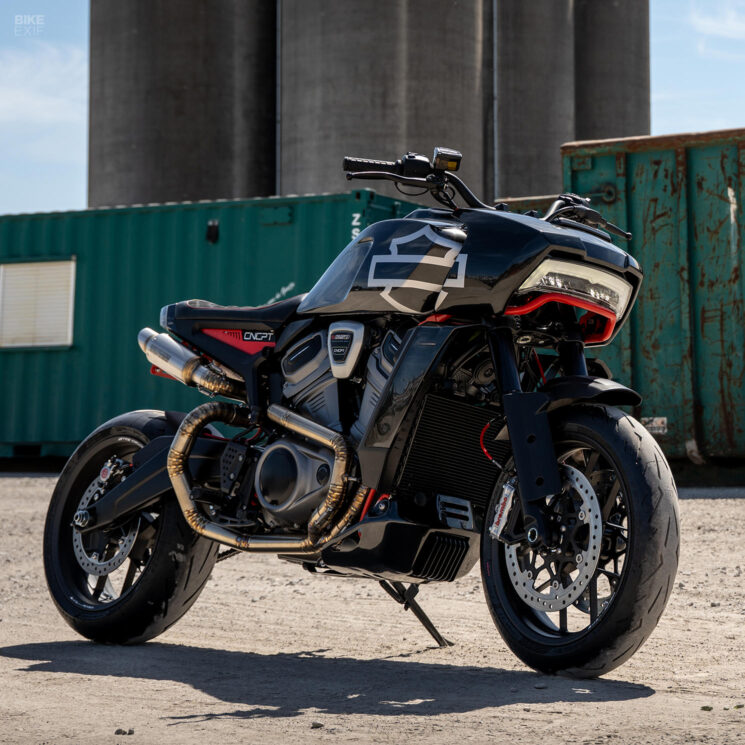
Powerbrick started with two brand new donor bikes—a Pan America 1250 Special [black] and a Pan America 1250 ST [silver]. Released earlier this year, the ST is a street-focused version of the Pan America, the most notable change being its smaller 17” front wheel. But these two machines are near-identical now, save for their paint jobs and a couple of minor details.
For starters, both bikes have traded their OEM wheels for ultra-slick 17” carbon fiber hoops from Rotobox, wrapped in Pirelli Diablo Rosso II tires. The silver bike wears a custom-built rear shock from TFX in the Netherlands, while the black bike retains its stock suspension, along with its adaptive ride height tech.
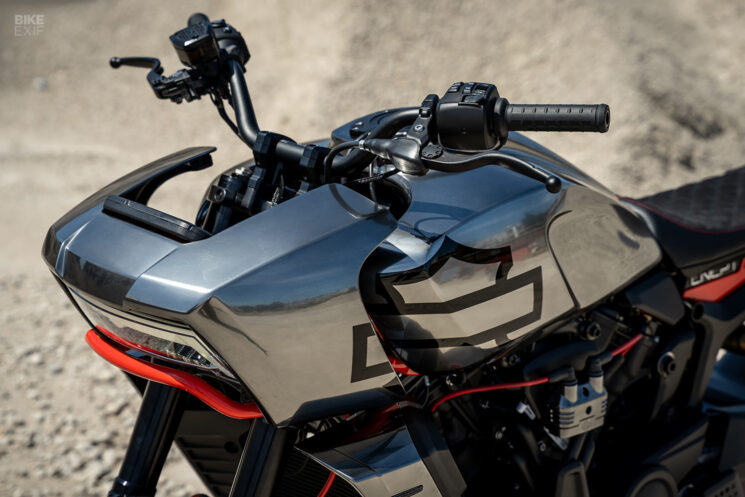
Next, Powerbrick used the CNCPT Moto front-end kit to transform the Pan America’s fairing. Only the lower nose cone remains—the windscreen and plastic dashboard housing have both been binned. A five-piece stainless steel bracket holds everything in place, including the stock TFT display, which now sits lower.
The kit also includes a full complement of stainless steel fasteners, along with anodized handlebar risers. They grip a set of tapered LSL riser bars, fitted with the Pan America’s standard controls and switches.
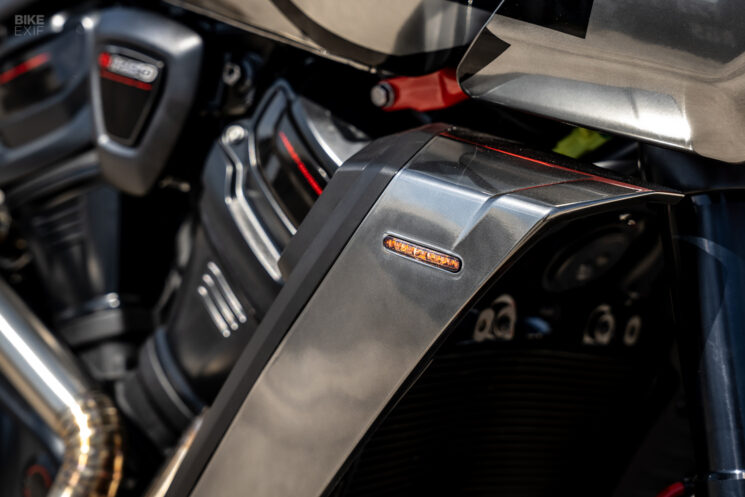
The Pan America Special shed the crash bars that flank its radiator, but kept its radiator shrouds, which were outfitted with slim LED turn signals. Powerbrick added a matching set of shrouds to the Pan America ST, which typically features less radiator protection. Both bikes retain their sump guards and front fenders.
The CNCPT kit is designed to use the Pan America’s stock fuel tank, sans the plastic center console that runs over the top of it. Removing it leaves the tank’s welds exposed, so Powerbrick sanded these down before repainting the bikes. Each tank now wears a slim CNCPT gas cap, retrofitted with each bike’s original key barrel for ease of use.
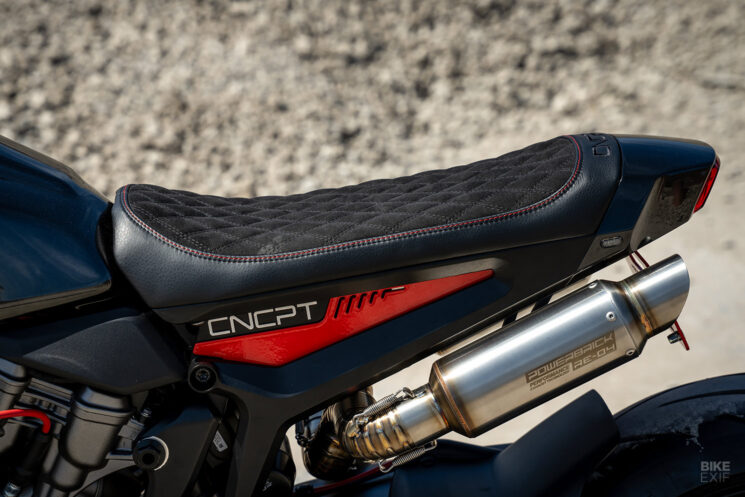
The most radical change to the Pan America’s layout is CNCPT’s heavily abbreviated tail section. Machined from a sizable chunk of aircraft-grade aluminum, it’s a bolt-on arrangement that Tim says can be done in a weekend—without the need for a bike stand.
The kit is comprehensive and extremely well thought out. It includes everything from a license plate bracket and light, to integrated LED turn signals that are fitted with Harley connectors, making them a straight swap. There’s also a built-in electronics tray, a full set of stainless steel fasteners, and a hydraulic hose kit from Venhill Racing that allows you to hide away the Pan America’s ABS pump.
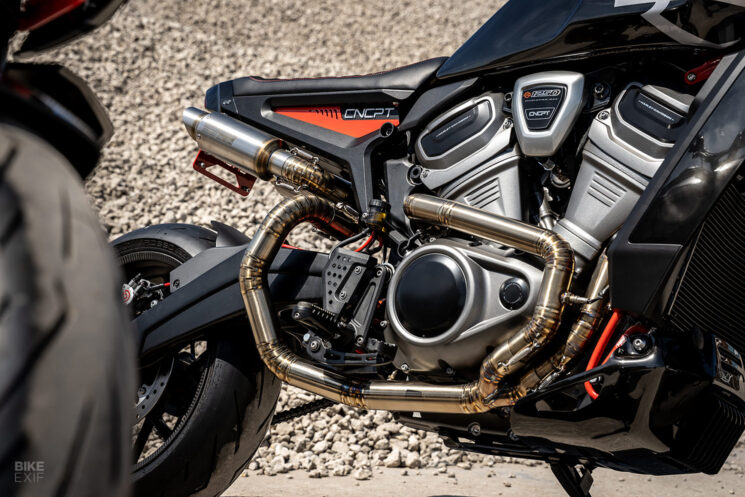
The tail kit reuses the original Harley taillight, adding a little OEM flair to the design. CNCPT offers it with or without upholstery, and with various exhaust options. These two bikes use matching twin muffler setups, with bespoke stainless steel headers that were fabricated by Chiel Nipius at Nius Moto.
Other upgrades include Venhill Racing brake hoses to match the ABS relocation kit, high-grade silicone coolant hoses from Samco in the UK, and DNA filters. Some judicious dyno tuning has each Pan America making 165-plus horsepower, while weighing around 45 kilos [99 pounds] less than before.
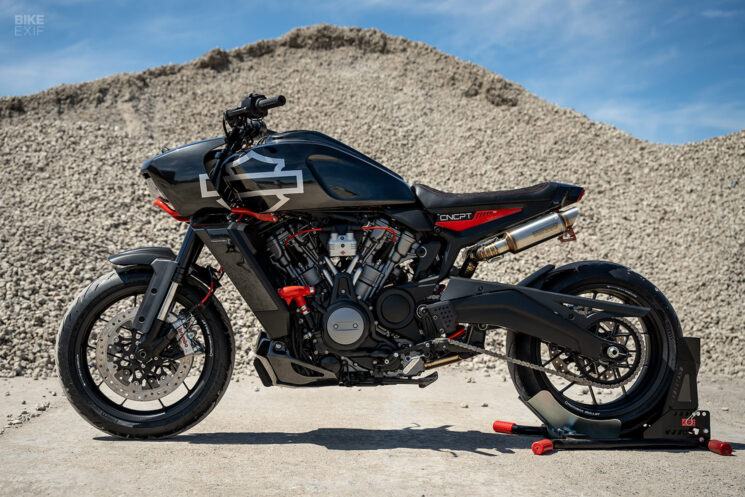
It took over a year to prototype, refine, and develop the kits that adorn this pair of striking Harley-Davidson Pan Americas. We’d call it time well spent. Resplendent in inverted liveries, with orange accents and leather and Alcantara upholstery, they make a strong case for the Pan America as a candidate for customization.
Powerbrick | CNCPT Moto | Images by Paul van Mondfrans Lindén
